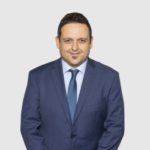Whilst recent short-term changes to superannuation laws have been refreshingly light, there have been changes in some thresholds and looming changes intended to be legislated that mean relevant planning opportunities still exist within your super fund.

Take the following couple for example:
- John and Jane are members of a Self-Managed Super Fund, both are 73 years old.
- They had a total super balance at 30 June 2023 of $1.78 Million each.
- Both John and Jane started a tax-free retirement pension with $1.6 Million back on 1 July 2017. This meant that the earnings within the SMSF had basically been tax free since then.
- Each member has a binding nomination in place in favour of the other where if they die, the survivor receives the death benefits as a pension in the fund.
This will mean that although the fund would continue as is – it will just have one member instead of two – part of the fund (approx. 50%) would go back to being in accumulation and 50% of the fund would go back to being taxable. Therefore, 50% of the income and capital gains would be subject to 15% tax in the fund itself.
As it stands, they are not affected by the new proposal starting 1 July 2025 to tax the proportion of earnings above $3 Million at an extra 15% – as each member is significantly below the $3 Million balance threshold. See more on this here.
Although things seem to be rolling along nicely are there any useful planning strategies that can be done?
Consider the following:
- Where shares / investments are being disposed of now and only part of the shares are being disposed, you can pick and choose which parcels to sell and select lower cost base parcels whilst more of the fund is tax exempt with both members alive. This will ensure that parcels remaining will be the higher cost base ones and if these are sold in the future when the fund has a single member and part of fund is taxable, it will result in lower capital gains at that point.
- On 30 June 2023, the threshold for contribution purposes for Total Super balance was increased to $1.9 Million (from $1.7 Million). This gives the opportunity for John and Jane to potentially make non-concessional contributions in the 2024 financial year.
As both members have a balance of below $1.79Million, they are able to put in an additional $220,000 each ($110,000 x 2) and take advantage of the bring forward rule.
They can do this by either a) contributing from outside the fund from personal funds into the SMSF if they have a high marginal rate in their personal name and/or wish to consolidate their investments further, or b) employ a withdrawal/recontribution strategy where it’s taken out of the fund and then put back in which changes the mix of taxable and tax free member components. This would save on future death benefits tax.
- Should be monitoring the fact that if one member passes away and the survivor inherits the balance in the fund, then the surviving member would be subject to the proposed new measure where the proportion of earnings above $3Million are subject to an extra 15% tax. (as balance of surviving member would be $3.56Million or more).
Planning for this will involve knowing the tax implications of exceeding the $3 Million cap and start thinking about what should happen to excess above $3 Million, such as whether it stays in the fund due to the additional tax still being low, taken out to invest personally, or give to adult children for their own purposes, including contributing to their own super.
As always with superannuation, specialist advice should be sought before undertaking any strategy that involves pensions, withdrawals or contributions. Please contact us if you have any enquiries.
